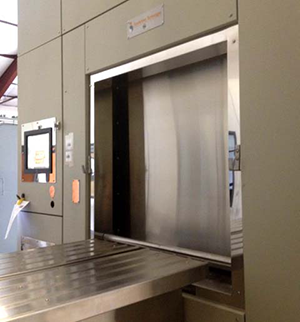Most people have a natural curiosity about the cremation process. Here is a general overview of the aCremation process, based on our over 40 years of experience.
Prior to Cremation
- Shortly after your loved one becomes deceased, you will be asked by the hospital or authorities who your chosen funeral home is and you simply provide them the name aCremation and our phone number. If you have registered with aCremation, you can simply hand them your aCremation wallet card which will have all the necessary information on it.
- All authorization forms and permits are completed and signed. (aCremation provides most forms online. Many forms can be completed prior to death for those wishing to make advance arrangements.) All of this is handled from your home or wherever you are. With aCremation you are never required to visit a funeral home or crematory. It is all designed around the convenience and comfort of you and your family.
- Typically, state law requires a minimum number of hours between the time of death and when the cremation occurs (frequently 48 hours). Only the County Medical Examiner or a Justice of the Peace may waive this requirement. Read more about Texas Funeral Requirements.
- Pacemakers are removed. The crematory must be made aware of pacemakers, prosthesis, implants, or other mechanical or radioactive devices (as well as recent radioactive treatments). These items must be removed in order to avoid damage to the crematory or personnel working nearby.
- You are responsible for removing all personal items before the body is released for cremation. Any items left on or with the body will be destroyed during cremation or during the final steps following the cremation process.
- In order to ensure respectful and sanitary treatment of your loved one, the crematory requires the body to be cremated in a combustible container. A basic container is provided as part of aCremation services.
 The Cremation Process
The Cremation Process
- Cremations are done individually. The cremation chamber (the furnace is called a retort) is designed to hold one body at a time. Under no circumstance would there be multiple cremations done at aCremation.
- The casket/container will be placed into a cremation chamber where the temperatures will be between 1600 and 1700 degrees Fahrenheit.
- The remains are moved to a cooling chamber.
- Unlike common perception, during the cremation the body is transformed into small skeletal fragments, not fine ash. The bone fragments are processed and reduced to small particles.
- Typically the entire process takes approximately 5 hours although the actual time for the body to be consumed is approximately 3 hours. Different factors affect the time including the size and density of the body.
- Any remains that are not bone fragments are separated and permanently disposed. Remaining metal from jewelry, dental fillings, or surgical implants is separated by a magnet.
- Cremated remains, depending on the bone structure of the decedent, will weigh between 3 to 7 pounds, and are usually white in color, but can be other colors due to temperature variations and other factors.
Post Cremation
- The remains will be placed in a temporary container. If you purchase an urn from aCremation, the remains will be placed in it for you.
- The non-natural bits of metal are later interred in common, consecrated ground in a remote area of a cemetery.
- If you have not selected a final place for the ashes, there are resources available to assist you. Your Arrangement Counselor can provide you with some suggestions. Options include placing the remains in mausoleums / columbariums, burials at a cemetery, scatterings or burials at sea.
Note: There may be additional legal steps not covered if the deceased is being transported across state lines or if we are receiving it internationally.


